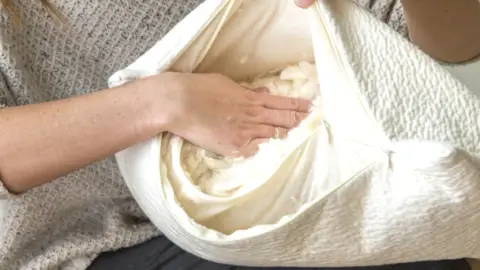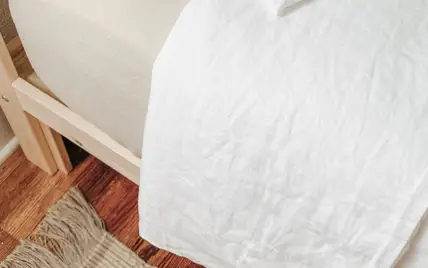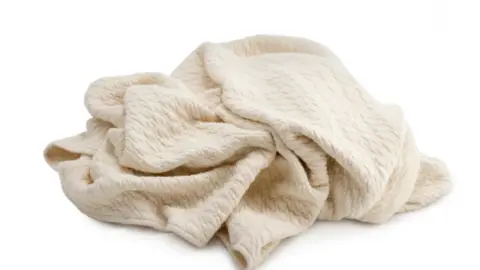SUSTAINABLE BEDDING - EVERYTHING YOU NEED TO KNOW
In recent years, the concept of sustainability has gained significant traction across various industries, including fashion, food, and home goods. For many, the realization of the impact of their purchases, has created a shift in their living and shopping habits.
One area where sustainability is making a profound impact is in the bedding industry. As consumers become more conscious of their environmental footprint, they are seeking out bedding options that are not only comfortable but also eco-friendly and ethically produced. In this Sustainable Bedding guide, we’ll dive into the world of sustainable bedding, exploring what it is, why it matters, and how you can make more eco-conscious choices for a better night’s sleep and a healthier planet.
Table of Contents
Understanding Sustainable Bedding
Sustainable bedding refers to bedding products that are made using environmentally friendly materials and production methods. These materials are often sourced and manufactured with minimal impact on the environment, reducing carbon emissions, water usage, and chemical pollutants. Sustainable bedding can encompass a range of products, including sheets, duvet covers, pillowcases, comforters, and mattresses.
Not only softer on the planet, sustainable bedding is healthier on your body. When making a bedding purchase decision, remember that you spend 1/3 of your life laying in bed. Reducing the chemicals that enter your body and brain, will be hugely beneficial to your, and your family’s health. Using sustainable bedding is the first step towards healthier living.
Bedding Materials Matter
One of the key components of sustainable bedding is the materials used in its production. Here are some eco-friendly materials commonly found in sustainable bedding:
1- Organic Cotton
Conventional cotton farming is known to be resource-intensive, requiring large amounts of water, pesticides, and toxic and polluting chemicals. Those chemicals impact your health and the planet, but mainly the health of its farmers.
Organic cotton, on the other hand, is grown without the use of harmful chemicals, promoting soil health and biodiversity. Unfortunately, according to the CFDA, less than 1% of global cotton is certified organic, and that number is currently declining. Because organic farming is more time consuming for the farmer, but also requires more knowledge and skills than regular cotton farming, it often costs more to the end consumer.
You will however find that organic cotton uses longer cotton strains that are softer and last longer than regular cotton. Because of the quality of the fiber, organic cotton lasts longer, keeps it shape and colors longer, and is easier to clean in the event of stains.
2- Linen
Linen is another material made from the flax plant, which requires fewer pesticides and water compared to cotton. While typically more expensive than organic cotton, linen bedding is known for its durability, breathability, and natural texture.
It is a great option for hot sleepers, or sleepers in hot climate. Its high breathability allows the body to naturally evaporate sweat and regulate its own temperature. One of the downside of some linen bedding, is it peeling properties, which can make keeping your room clean and neat challenging. However, there are incredible linen options out there, which are high-quality and do not peel! We recommend this one, but do your research when it comes to other brands.
3- Bamboo
Bamboo is a highly renewable resource as it grows so quickly and does not need to be fully harvested. Pieces of bamboo are cut, and the plant keeps growing.
Growing bamboo requires minimal water and pesticides, as it is a naturally insect-repellent plant. Bamboo bedding is soft, hypoallergenic, and biodegradable, making it a great option for sustainable bedding.
4- Tencel (Lyocell)
Tencel is a sustainable fabric made from wood pulp, typically sourced from eucalyptus or bamboo trees. Here again, the pulp can be extracted without requiring the cutting of the tree, making it a sustainable crop.
It is produced using a closed-loop process that recycles up to over 99% of the water and solvents used it its making, making Tencel a very environmentally-friendly bedding material, but also one of the softest on the market today. Thinking buttery soft, can’t-get-out-of-bed soft!!
5- Recycled Materials
Some bedding brands use recycled materials, such as recycled polyester or plastic bottles, to create new bedding products, reducing waste and minimizing environmental impact. Cotton can be recycled as well, making it the most sustainable kind of cotton you can find. Research the bedding brands you consider buying from, as it should be very clear where the materials come from!
Benefits Of Sustainable Bedding
Choosing sustainable bedding offers numerous benefits, both for consumers, farmers, and the planet:
Environmental Conservation
By opting for bedding made from eco-friendly materials, you’re reducing your carbon footprint and minimizing the depletion of natural resources. Water is a big one here… many materials commonly used in bedding require an incredible amount of watering to grow and be turned into fabric. Most are unfortunately grown in water-stressed countries, such as India, China, Pakistan, Turkey, and the U.S.
The other environmental cause of concern is chemicals. Solvents, chemicals, repellents, dyes, etc., are all a big part of manufacturing most bedding. By sticking with sustainable bedding options, you are improving environmental conservation.
Healthier Indoor Environment
Conventional bedding products often contain synthetic chemicals and dyes that can off-gas volatile organic compounds (VOCs). Sustainable bedding, made from natural and organic materials, can help create a healthier indoor environment, free from harmful toxins.
You should, at least, stick to OEKO-Tex certified bedding, even if not very sustainable. The OEKO-Tex certification ensures that the textile has been certified free of harmful substances.
Durability and Longevity
Sustainable bedding is typically made with high-quality materials, longer and stronger fiber strains, and better craftsmanship, resulting in more durable and long-lasting products. While the initial investment may be higher, the lifespan of sustainable bedding will generally outweigh that of conventional options.
Thanks to the quality of the bedding, you can expect color and shape to remain intact wash after wash, and will also find that stains can be removed much easier than on conventional materials.
Comfort and Performance
Many sustainable bedding materials, such as organic cotton and linen, offer superior comfort, breathability, and moisture-wicking properties, ensuring a comfortable and restful night’s sleep.
The softness of any of the sustainable materials presented above will be a day-and-night different with conventional bedding. And because the fiber is natural, your body with naturally auto-regulate its temperature and prevent sweating and overheating at night.
How To Choose Sustainable Bedding
When shopping for sustainable bedding, there are several factors to consider to ensure you are making an eco-conscious choice:
Materials
- Materials: look for bedding made from organic or sustainable materials such as organic cotton, linen, bamboo, or Tencel.
- Certifications: check for certifications such as Global Organic Textile Standard (GOTS), OEKO-TEX Standard 100, or Forest Stewardship Council (FSC) certification, which verify the sustainability and environmental impact of the product. The top-in-class is MADE SAFE!
- Production methods: Research the brand’s production practices to ensure they align with sustainable and ethical standards, such as fair labor practices and responsible manufacturing processes.
- Packaging: Consider the packaging used for the bedding products. Opt for brands that use minimal and recyclable packaging to reduce waste.
- Care and Maintenance: Choose bedding that is easy to care for and maintain, as proper care can extend the lifespan of the product and reduce the need for frequent replacements.
Make The Switch To Sustainable Bedding
Transitioning to sustainable bedding doesn’t have to be overwhelming. Here are some practical steps you can take to incorporate more eco-friendly bedding options into your home:
Start Small
Begin by replacing one or two bedding items, such as sheets or pillowcases, with sustainable alternatives. Gradually expand your sustainable bedding collection over time. Remember that sustainable bedding can last you 10 or 20 years! Don’t overbuy, start small – buy better buy less. Then add as you feel the need.
Donate or Recycle
Rather than disposing of old bedding items, consider donating them to local charities or textile recycling programs. This helps reduce waste and extends the life cycle of the products. Recycling and repurposing give any bedding a sustainable life.
Educate Yourself
Take the time to research different sustainable bedding brands and materials to find the options that best align with your values and preferences. Read through websites, figure out where materials and products come from and what they are made of. When a brand has a certification, it will be easily displayed on their website.
Spread the Word
Share your journey towards sustainable bedding with friends and family to inspire others to make more eco-conscious choices.
Non-Biased Reviews' Favorite Sustainable Bedding Brands
Sustainable Bedding - What You Need To Know
FAQ
Most frequent questions and answers
Sustainable bedding refers to bedding products that are made using environmentally friendly materials and production methods. These materials are often sourced and manufactured with minimal impact on the environment, reducing carbon emissions, water usage, and chemical pollutants.
Choosing sustainable bedding offers numerous benefits, including reducing your carbon footprint, promoting environmental conservation, creating a healthier indoor environment free from harmful toxins, and enjoying durable, long-lasting products with superior comfort and performance.
Common materials found in sustainable bedding include organic cotton, linen, bamboo, Tencel (Lyocell), and recycled materials such as recycled polyester or plastic bottles. These materials are chosen for their eco-friendliness, durability, breathability, and moisture-wicking properties.
When shopping for sustainable bedding, look for certifications such as the Global Organic Textile Standard (GOTS), OEKO-TEX Standard 100, or Forest Stewardship Council (FSC) certification, which verify the sustainability and environmental impact of the product. Additionally, research the brand’s production practices to ensure they align with sustainable and ethical standards.
While sustainable bedding products may have a higher initial cost compared to conventional options, they often offer superior quality and durability, resulting in long-term savings. Additionally, the environmental and health benefits of sustainable bedding can outweigh the upfront investment.
More Sleep Resources

What Is Luften | How, When, How Much, and Everything Else You Should Know
WHAT IS LUFTEN What, How, When, And Everything Else If you are looking for simple, yet effective, ways to boost your health, improve your sleep,

Best Pillow For Sore Neck
BEST PILLOW FOR SORE NECK Our Top Picks and Expert Tips for Pain-Free Sleep A sore neck can disrupt your entire day—and a bad pillow

5 Benefits of Memory Foam Mattresses | Why They’re Worth Considering for Better Sleep
5 BENEFITS OF MEMORY FOAM MATTRESSES Why They’re Worth Considering for Better Sleep Memory foam mattresses have become a go-to choice for sleepers seeking comfort,

How Does Sleep Improve Memory?
HOW DOES SLEEP IMPROVE MEMORY? Make Sleep a Priority for Better Memory In today’s fast-paced world, where productivity is often prioritized over rest, many underestimate
What exactly is sustainable bedding?
Sustainable bedding refers to bedding products that are made using environmentally friendly materials and production methods. These materials are often sourced and manufactured with minimal impact on the environment, reducing carbon emissions, water usage, and chemical pollutants.
Why should I choose sustainable bedding?
Choosing sustainable bedding offers numerous benefits, including reducing your carbon footprint, promoting environmental conservation, creating a healthier indoor environment free from harmful toxins, and enjoying durable, long-lasting products with superior comfort and performance.
What materials are commonly used in sustainable bedding?
Common materials found in sustainable bedding include organic cotton, linen, bamboo, Tencel (Lyocell), and recycled materials such as recycled polyester or plastic bottles. These materials are chosen for their eco-friendliness, durability, breathability, and moisture-wicking properties.
How do I know if bedding is truly sustainable?
When shopping for sustainable bedding, look for certifications such as the Global Organic Textile Standard (GOTS), OEKO-TEX Standard 100, or Forest Stewardship Council (FSC) certification, which verify the sustainability and environmental impact of the product. Additionally, research the brand's production practices to ensure they align with sustainable and ethical standards.
Are sustainable bedding products more expensive?
While sustainable bedding products may have a higher initial cost compared to conventional options, they often offer superior quality and durability, resulting in long-term savings. Additionally, the environmental and health benefits of sustainable bedding can outweigh the upfront investment.
Share this deal with a friend!

Laura Georgieff
Laura is a mother of three who did not sleep through the night for the first 5.5 years of her kids' lives. She is passionate about sleep quality and loves sharing her experience and knowledge of all thing bedding! It is her mission to help you make the best decisions when it comes to sleep and help you get the best deal on the market!





